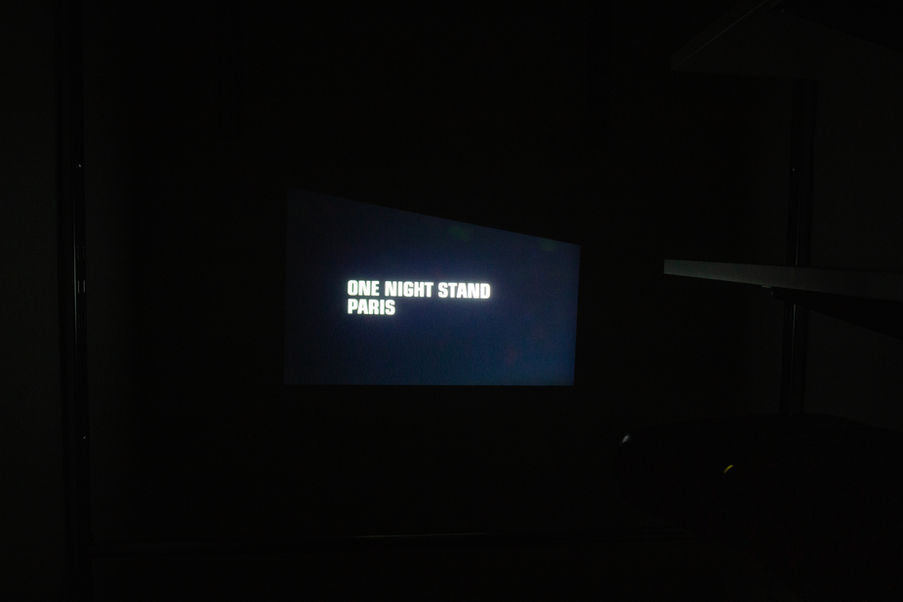EUROPEAN RENOVATION
Sanna Helena Berger
Charlotte Birnbaum
Alina Chaiderov
Lina Kruopytė
Katarina Sylvan
Tora Schultz
Lisa Tan
A surface frozen in time: a Stockholm apartment furnished with the aspirational décor of the early
2010s, part third-generation Scandi minimalism, part globalised Pinterest aesthetic, forms the
backdrop for the group exhibition European renovation. Here, an intervention is staged amidst
brass hardware, wooden floors, and walls in muted Jotun Morgondis. Within this familiar setting,
now also pervaded by the unsettling feeling of the recently déclassé, the artworks appear both at
home and out of place. For some time, Scandinavian minimalism was able to hide within its own
desire to disappear – a style invented by a people who, above all, refuse suffering. An interior
style of interiority, so to speak, it is one that seeks to repress any sign of intensity. This domestic
space, both neutral and charged, and now abandoned by good taste, acts as a foil against which the
artworks press through various displacements and divergences.
Artist and culinary historian Charlotte Birnbaum turns to art de la table, or dukning. The
piece Knives Out, part readymade and part ritual of table setting, offers an object of old-world
grandeur, with a layering of knives and baroque serving plateaux. Attention is drawn to the hand
that styles and the hand that assembles displays, while teasing out unconscious undercurrents in
the performative tablescaping practices of contemporary, algorithm-driven foodie culture.
Lina Kruopytė’s sculptures, appearing as oversized colour swatches, may at first sight seem
structurally minimalist (the art variety), cultivated through a lineage of minimalism passed down
from someone like Anne Truitt. Yet the sculptures Verticality No. 1 (Nobile, Sunkissed, Peach Sky,
Keisergul, 2025) and Verticality No. 2 (Sonoma Oak, Birch, Santana Oak, Sanremo Oak, Sheffield
Oak, 2025) also feature faux-wood laminate surfaces and color schemes reminiscent of the interior
style known as evroremont.
Short for “euro-renovation,” evroremont was an Eastern European renovation trend that emerged
in the 1990s, aspiring to an imagined Western aesthetic. A fantasy of Europeanness was assembled
from magazines, hotels, and IKEA catalogues, and realised through wood-effect veneer, peach-
coloured walls, spotlights, and ornamental restraint. This post-Soviet performance of modernity
smoothed over the structural instabilities (taste, class, ideology) that sustained it. By “returning”
these mis-imagined inheritances to Northern Europe, in a domestic setting that has itself become
anachronistic, Kruopytė’s sculptures introduce a pluralism of minimalisms.One of Katarina Sylvan’s
two pieces in the exhibition, titled Untitled Grid (2025), also appears to contribute to this layering
of minimalisms. Made from masking tape arranged in a grid, her wall work seemingly collapses
Sol LeWitt, Burberry, Mondrian, Merlin Carpenter, and a kitchen towel into a single image.
Or it could simply be what it appears to be: masking tape in a grid pattern on the wall.
Sanna Helena Berger’s Stil-leben (2025) is a two-part still life: a text for the wall and a film that
depicts a never-ending domestic scene. Seen in relation to the proliferation of female-coded
contemporary still lives produced through the logic of the photogenic, Berger’s still life, rather
than presenting stylised opulence, evokes the deeply mundane and the routines that reproduce it,
approaching still life both as a mental state and a material condition.
The notion of upholding is also present in Alina Chaiderov’s The Still Point (2025), in which a
minimal steel structure holds two dead branches in balance. The industrial-organic elements are
both stripped of their original functions and fused together in a state of suspended transformation.
Tora Schultz’ Appendix (2025) consists of a burned diary turned bronze sculpture for the wall,
where none of its pages – only the lock – made it through the fire of the casting process. The lock
still performs its job in keeping the secrets safe.
If Schultz’s work preserves, or erases, private memory through material transformation, Lisa
Tan’s One Night Stand (Paris) (2006) explores the ways we internalise image culture. Produced
while roaming the city of Paris alone past midnight for twenty-four hours, Tan’s 22-minute silent,
imageless video consists of a black screen and subtitles based on her nighttime notes. Even for
viewers without first-hand experience of Paris, the city resides in what Tan calls, via Félix
González-Torres, our “blood memory”: a kind of knowing not derived from physically inhabiting
a space, but from the inheritance of innumerable representations. In the case of Paris, this can
famously manifest as the acute condition known as Paris Syndrome – a delusional state of
disorientation upon discovering the disparity between image and reality.
By layering the Scandinavian apartment, enhancing and troubling its silent allure, European
renovation also brings forth a point of collision. Poet Lisa Robertson once wrote that “glamour is
the true subject of the idea.” The exhibition appears to take a dual position in relation to this
claim: both as a critic of inherited style and of the styling of inheritances, while also heralding
their forms. Neither stance, it suggests, is sufficient on its own.
– Marie-Alix Isdahl


















